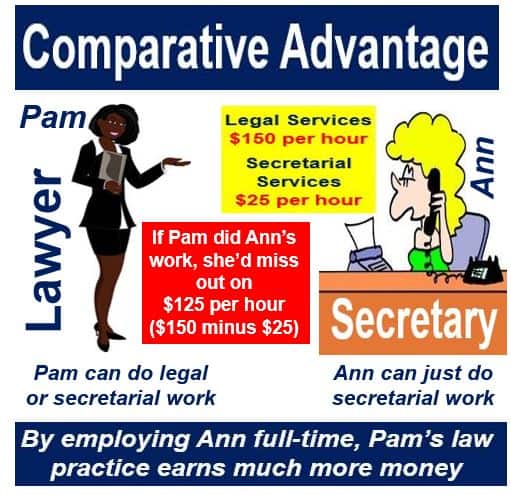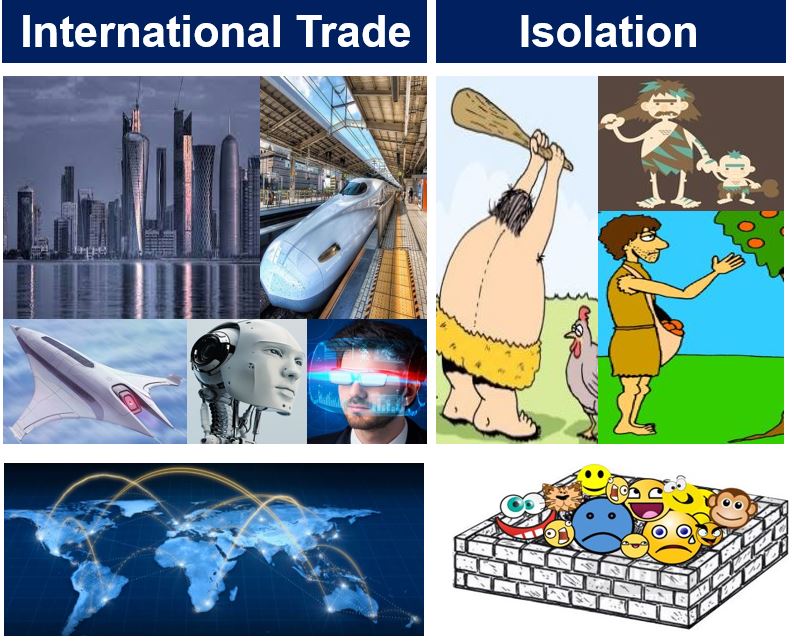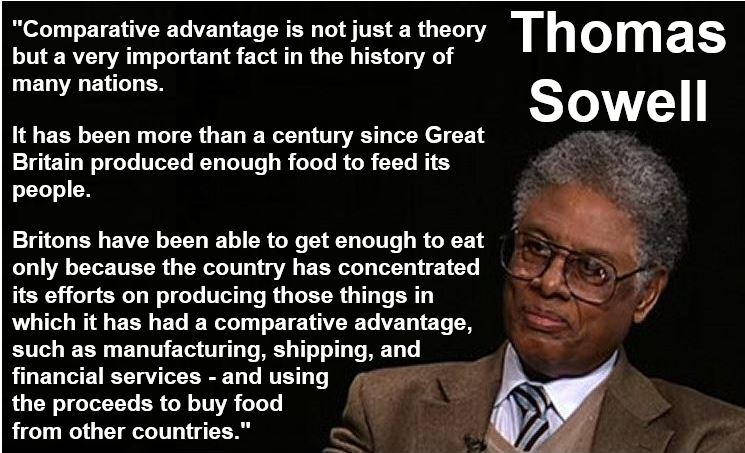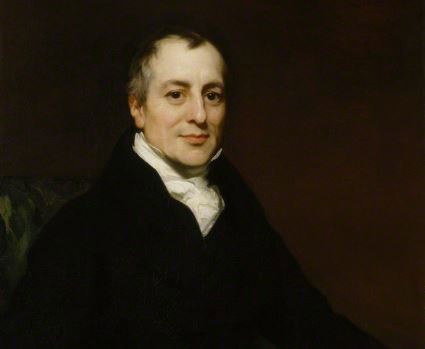Comparative Advantage is an economic concept that a nation should specialize. Specifically, it should specialize in making and exporting only products that it can produce more efficiently than other goods.
It should specialize even if it has superior productivity in making all goods compared to another country. Furthermore, comparative advantage says that the country should import the goods it does not make.
This strategic specialization allows countries to maximize their efficiency and economic scale, leading to a more effective allocation of global resources.
An example – two countries
Imagine there are two countries, Nation A and Nation B. Nation A knows how to make cars and airplanes, while Nation B only knows how to make cars. Productivity in car-making in Nation A is slightly superior to Nation B’s.
Nation A would be better off making just airplanes and importing cars from Nation B because airplanes sell for much more money. In other words, Nation A can buy many more cars if it imports them and just makes planes.

What happens if Nation B only makes cars and Nation A just makes airplanes? They can trade so that the two countries end up with both cars and planes.
Nation A’s workers can buy more cars per head of population if they just make planes. Total production and consumption of Nation A and Nation B combined is considerably greater.
We can apply the theory of economic advantage to whole economies and companies. We can also apply it to people.
Comparative advantage – definition
Comparative advantage is the idea that a country should focus on making and selling the things it’s best at producing efficiently, even if it’s not the absolute best in the world at it.
At the same time, it should import goods and services that are harder or more expensive for it to produce. By doing this, countries can trade more with each other and everyone ends up better off overall.

Absolute vs. comparative advantage
Comparative advantage and absolute advantage are terms we often use in the same text. However, their meanings are quite different.
Imagine a lawyer and her secretary. This lawyer can type faster and is better at producing legal services than the secretary. The lawyer has an absolute advantage over the secretary.
Even so, both people benefit thanks to their comparative advantages as well as disadvantages. Let’s suppose that legal services and secretarial duties charge $150 and $25 per hour respectively.
The lawyer is capable of providing both legal and secretarial services. On the other hand, the secretary can only provide secretarial duties.
However, for every hour the lawyer spends on secretarial work, she is not earning $150 by practicing law. Consequently, she loses a net $125. The lawyer would be better off working full-time as a lawyer and employing a full-time secretary.
40-hour week compared
Look at the difference in income below for a 40-hour week:
Lawyer just does secretarial work and has no help:
$25 x 40 hours = $1000
Lawyer practices law full-time and employs a full-time secretary:
Lawyer’s fees of $150 x 40 hours = $6,000. Minus secretary’s wages of $1,000 ($25 x 4).
The net income for the week is $5,000
The lawyer can do the secretary’s job. Nevertheless, she earns much more by delegating the secretarial work to an employee.
The opportunity cost in employing a secretary is very low. This is where her comparative advantage lies.
Opportunity cost refers to how much you have to give up by not doing something. Therefore, in this case, the opportunity cost is the lawyer giving up doing secretarial work.

David Ricardo
David Ricardo (1772-1823) developed the classical theory of comparative advantage in 1917. Ricardo was a British economist who academics today consider as one of the most influential of the classical economists. He also introduced the Ricardian equivalence proposition.
He used it to explain why nations engage in international trade. They trade even when one country’s workers are more efficient in producing every single product than those in another.
Ricardo showed what happens if two national economies, which can produce two commodities, engage in international trade.
They subsequently consume more by exporting the product for which they have a comparative advantage while importing the other product. However, there must be a difference in labor productivity between the two nations.
Ricardo’s theory implies that comparative advantage, and not absolute advantage, is responsible for the bulk of international trade.

Adam Smith
Scottish political economist Adam Smith (1723-1790) first alluded to this idea as the basis for international trade. He did so in the publication of The Wealth of Nations in 1776. Many modern economists say Smith was the ‘father of modern economics.’
The concept of comparative advantage appeared in Ricardo’s book – On the Principles of Political Economy and Taxation – published in 1817.
